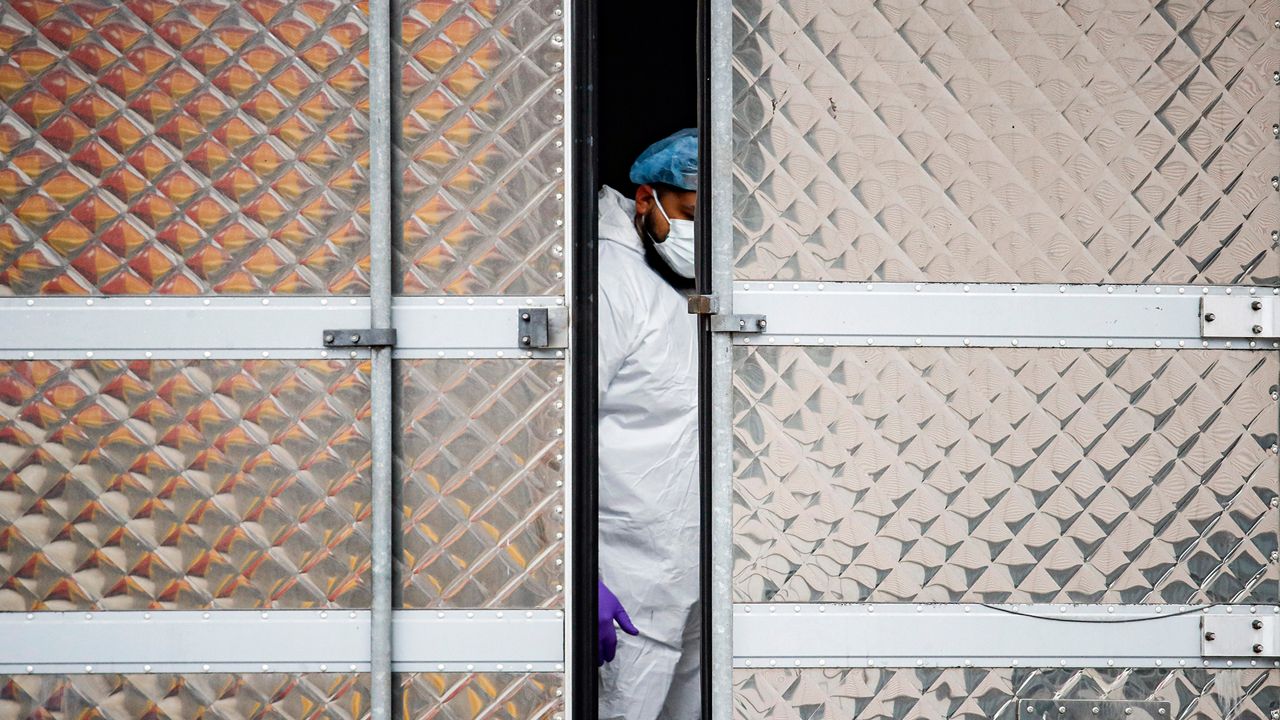COLUMBUS, Ohio — An attorney representing an appellant who wants the Ohio Supreme Court to order the release of COVID-19 victims’ names asserted the state is seeking to withhold data that could expose officials’ pandemic missteps, he said in an interview.
What You Need To Know
- The Ohio Department of Health said identifiable COVID-19 death data should not be released
- Ohio resident Rosanna Miller and her attorney appealed to the Ohio Supreme Court
- A lower court ruled in their favor, but the state successfully appealed to a district court
Andrew Mayle represents Ohio resident Rosanna Miller, who he said is a “curious citizen” seeking Ohio COVID-19 death data. In April 2020, she made a records request to the Ohio Department of Health’s Office of Vital Statistics, which was denied, leading her to sue.
Miller received a favorable ruling from the Ohio Court of Claims in May 2021, ordering the release of the records, but the state successfully appealed the case, with the 10th District Court of Appeals ruling against the release of the records in February of this year. In March, she filed to appeal that decision to the Ohio Supreme Court.
The Ohio Attorney General’s Office, on behalf of the Ohio Department of Health, maintains Ohioans have a privacy right relating to their health that extends even after they die, preventing the release of the COVID-19 death data.
“A cause of death might—rightly or wrongly—be a socially-stigmatized, religiously-condemned, or otherwise sensitive topic for a decedent’s family, such as self-inflicted harm, drug overdose, hereditary condition, or AIDS,” their attorneys said in an April 21 filing.
Now the Ohio Supreme Court has to decide if it will take up the case, which could have ramifications beyond COVID-19 if judges choose to address whether lists of Ohio decedents' names and cause of death information should be available to the public.
This case is one of several lawsuits pertaining to requests for COVID-19 deaths records. Media organizations including the Columbus Dispatch, the Cincinnati Enquirer and WCPO 9, as well as Ohio residents Patrick Walsh and Lisa Knapp, filed lawsuits for the release of COVID-19 death data, some of which related to requests for nursing home death data.
Mayle said his client’s case is more advanced because the Supreme Court could take the case sometime this summer if at least four justices agree to review it. The Ohio Department of Health filed a 13-page memorandum urging the Ohio Supreme Court to not take the case, and urging the court to rule against the release of the records if it does.
Miller’s request asked for the name, age, date of death, county of death, whether there was an autopsy, the place of death (hospital, residence, etc.) and the death code for all COVID-19 deaths.
“The data involved in these records is used to make very important public policy decisions, decisions that affect all Ohioans; therefore, Ohioans have a right as a check and balance on their government and to keep the government honest, to see these records to see if the records bear out what the government claims that they say,” Mayle said.
The death data could shed light on whether COVID-19 lockdowns and restrictions were effective, and he said its data that sociologists, demographers and data scientists all want to see. Transparency of death data also holds the government accountable, he said.
“When the government and government actors know that the public has access to the same data that the government actors do, that alone, the prospect of the public seeing the same information, it helps keep government honest,” he said.
The state counters it releases plenty of COVID-19 death data for the public to assess its response to the pandemic and to meet its legal obligations. The memorandum said the public can find COVID-19 death data using the Ohio Public Health Information Warehouse and the state’s “COVID-19 Dashboard.”
“A vast amount of aggregate, de-identified information was (and is) available to the public, including Ms. Miller,” the memorandum said. “Nowhere does Ms. Miller explain why the public would need individually identifiable information about COVID-related deaths in order to ‘gauge which officials took valid policy stances, who was irresponsible, and what future measures ought to be considered.’”
Within 48 hours of a death in Ohio, a doctor needs to produce a “medical certificate of death,” and the Ohio Department of Health maintains the data from those certificates.
The information Miller requested exists in at least two places — the Electronic Death Registration System and a database called “EnterpriseDatawarehouseSecure,” according to a report by Special Master Jeff Clark, who was appointed by the lower court to issue a report on the case. Clark sided with Miller in February 2021 and said the court should order the release of the records.
Prior to the pandemic, the Ohio Department of Health fulfilled requests for death data similar to Miller’s, according to court records, and the type of data that’s contained in the records continues to be available via death certificates. But those certificates cannot feasibly be obtained for all of the tens of thousands of COVID-19 victims given the financial and time costs of requesting death certificates.
“If anyone died, I can easily go get their death certificate, publicly available, but Ms. Miller doesn't need the death certificates. Usually someone might need a death certificate, for example, to make a life insurance claim or to transfer property after someone dies. She doesn't need death certificates, she just needs the raw data,” Mayle said.
The Ohio Department of Health argues that releasing an individual death certificate that contains identifying information is very different than releasing a massive dataset of death records with identifying information.
Releasing such a volume of decedent information could potentially enable bad actors to commit large-scale identity theft or other kinds of fraud, the state argued.



